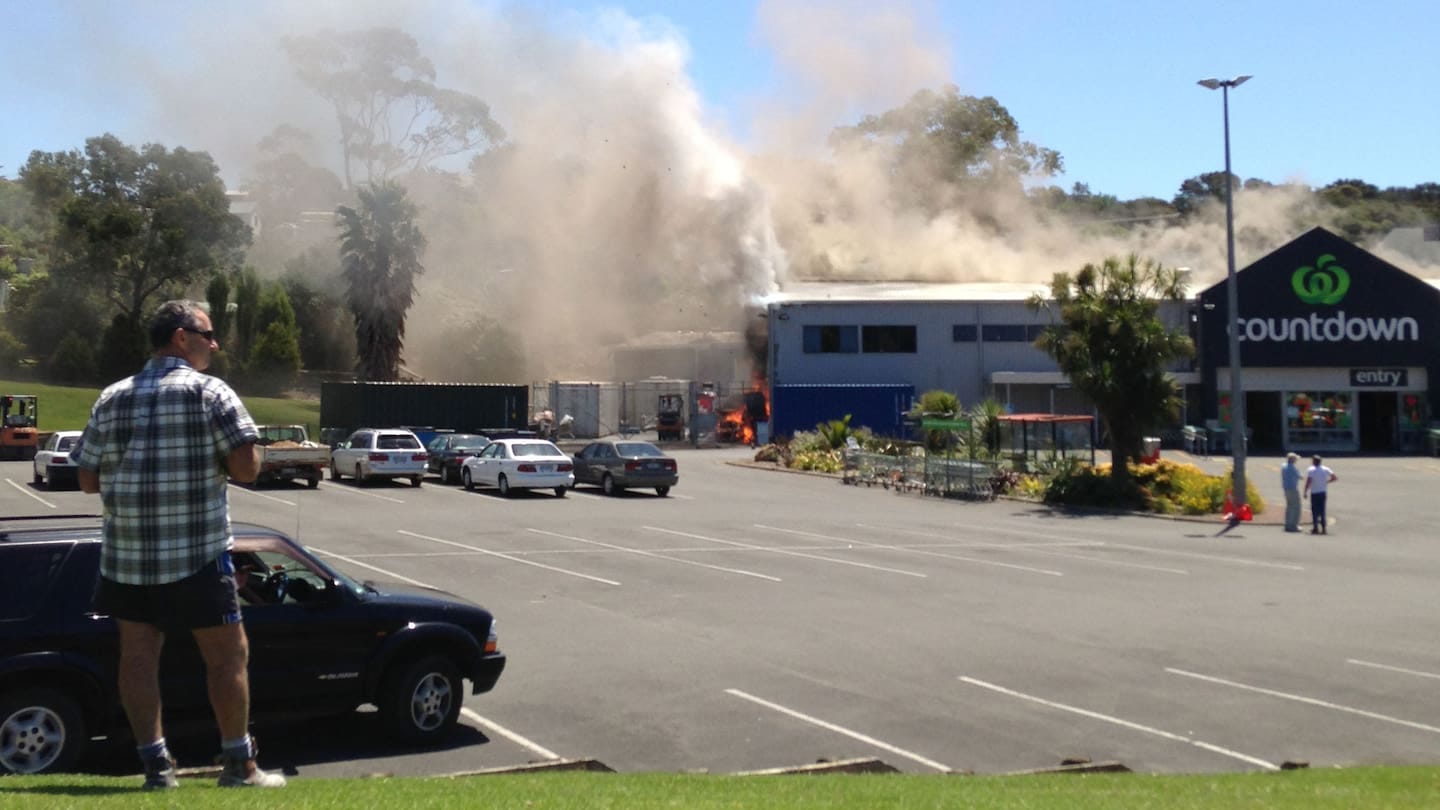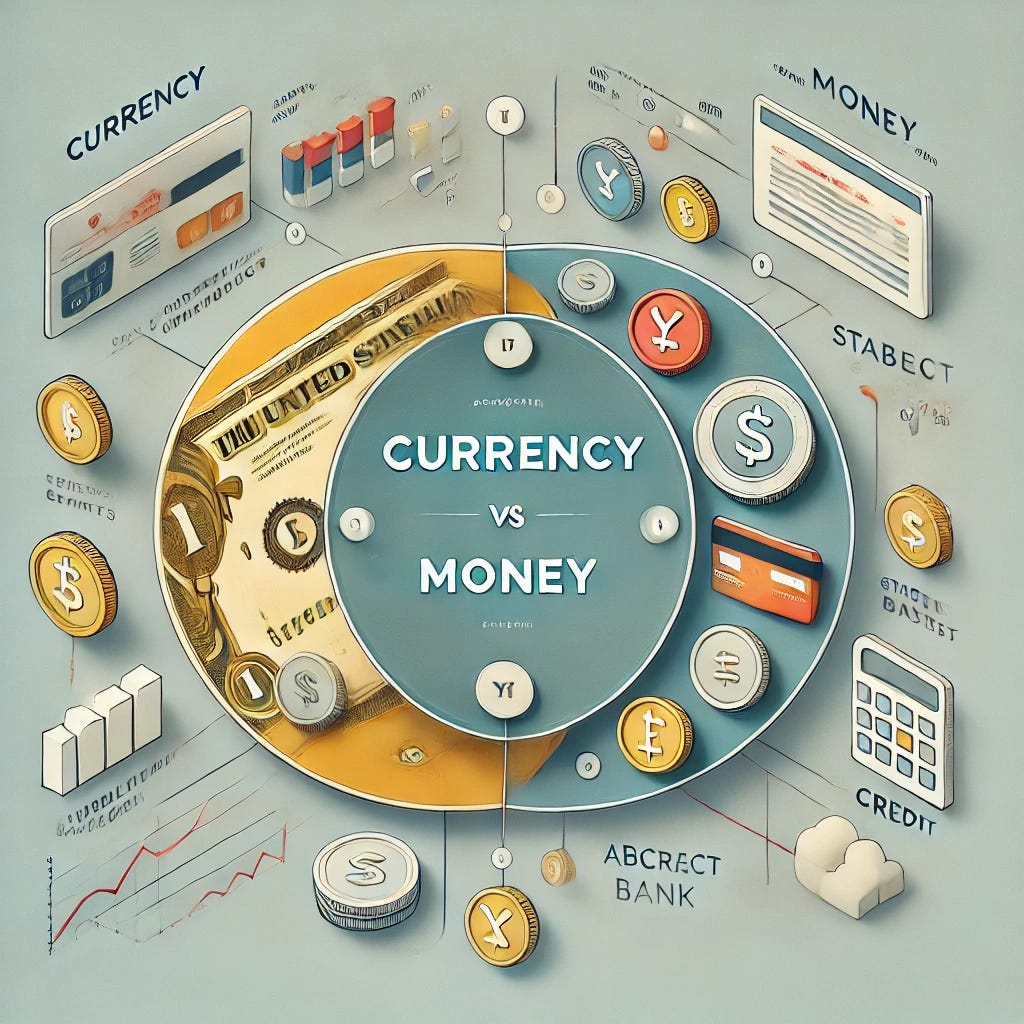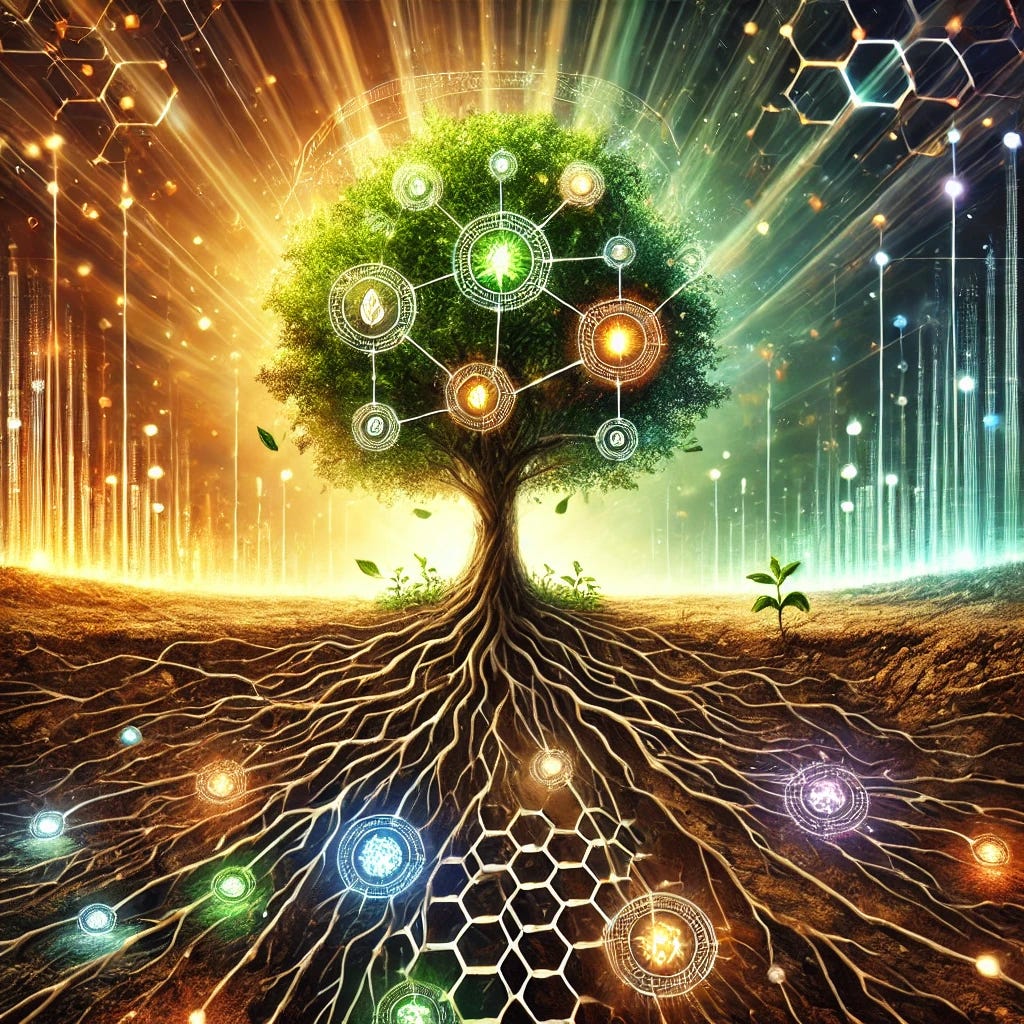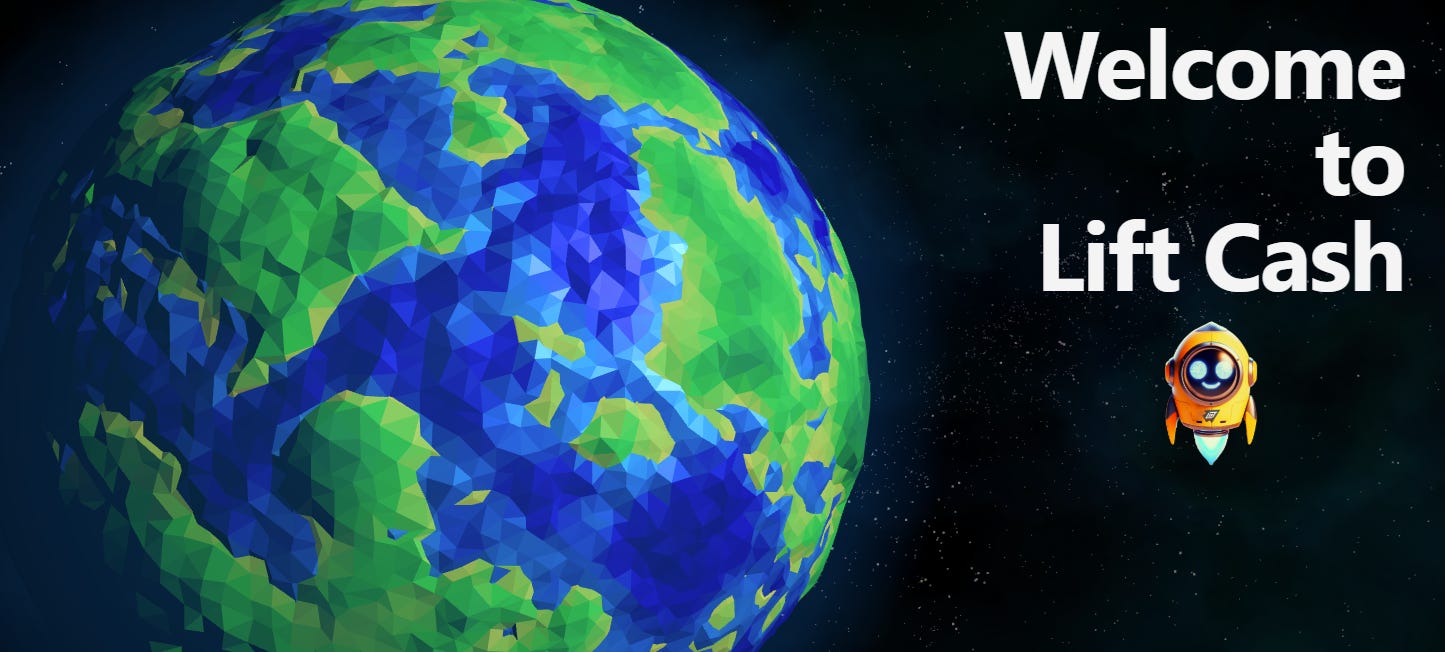Reflections On True Values
The Story Continues & Evolves
Let's weave your lived experience on Waiheke Island, the Eurodollar and stablecoins, and Alexandra and Miguel's ongoing dialogue in our Bitseed Substack Sci-Fi story.
ALEXANDRA AND MIGUEL: THE SEEDS OF VALUE
Scene: Alexandra and Miguel sit on the veranda of Miguel's tiny home, a solar-powered retreat in the Cascadia bioregion. Outside, the garden is alive with winter greens, seeds carefully collected and cataloged for the coming seasons. Alexandra cradles a cup of herbal tea as Miguel adjusts the solar lamp overhead. Their conversation turns reflective.
Alexandra:
I’ve been thinking about Waiheke lately. Do you remember when I visited? The endless skies, the quiet hum of the cicadas, the way the island seemed to breathe on its own? You found Waiheke during a trip to Sydney Australia if I recall that correctly when you flew through Auckland, New Zealand.
Miguel:
Yes you remember that well in fact, my memory always goes back to how I felt when I stepped off the ferry at Matiatia Bay; it was so strong and I felt like I had come home. And yes I also remember when you came out to visit me there. You came just after the drought, do you remember that wonderful place I lived in, in Rocky Bay? Things were beginning to recover by then. But during the worst of it—when the wells dried up and the wait for water was two months—it was like watching the island gasp for air. Plants withered, crops failed. Even people began to look weathered. That was when it hit me: water, air, food—these aren’t guarantees. They’re gifts we’ve abused into fragility and they are all finite. Going through a drought on an island which depends on precipitation and rainwater storage tanks was a huge learning experience for me.
Alexandra:
Yes I recall Rocky Bay and the Tui’s calls there. I wish I could’ve been there during the drought. Not to see the suffering, but to witness how people coped, or didn’t. It’s humbling, isn’t it? That everything we take for granted—air, water, food—is infinitely more valuable than any currency, and yet money dictates who gets what, even in crises. It was very good of you to allow people to use water from the well at your friend’s home too.
When I got back to El Segundo after this trip, I began to think about our water supplies in Southern California, we get so little rain there and no-one I knew about had any water storage here. Then we have these gigantic concrete channels that take any rains we get there right out into the Pacific Ocean.
Miguel:
Exactly. That’s the paradox. Seeds and spores, the lifeblood of food systems, are devalued. Meanwhile, abstractions like the Eurodollar system—money with no physical currency—hold more sway over global stability than the very ecosystems that sustain us. The irony gnaws at me.
There was another issue I witnessed whilst living on Waiheke. As you know there are two main supermarkets there and one, Countdown, had a serious fire. Almost immediately food and other supplies ran down, luckily the damage was too serious. However, this is yet another illustration of how we all live in finite systems and then we have these ludicrous and dangerous “just-in-time” systems.
Alexandra:
Oh yes I remember your telling me about the fire there. You know, the way you describe the Eurodollar system reminds me of stablecoins like USDC or USDT. They’re another layer of abstraction—money without roots. On Waiheke, water shortages were real, tangible, something people felt in their bones. But stablecoins? They’re like the digital ghost of the Eurodollar, another layer removed from what actually matters. Can you expand a bit more on what the Eurodollar system is?
Miguel:
Yes of course, first of all there are some very basic details, which are certainly not taught in most of our our schools and colleges. The differences and relationships between Currency and Money.
1. Currency
Definition: Currency is the physical form of money—banknotes and coins—issued by a government or central bank. It is a tangible medium of exchange.
Features:
Tokenized Money: It represents value but has little or no intrinsic value itself (unlike gold or silver coins).
Legal Tender: It is officially recognized for the settlement of debts and payment of goods and services within a specific jurisdiction.
Example: A $20 bill is currency because it is a government-issued physical token used for exchange.
2. Money
Definition: Money is a broader concept encompassing anything that serves as:
Medium of exchange – Facilitates trade by eliminating the need for barter.
Store of value – Maintains its purchasing power over time.
Unit of account – Standardizes the measurement of value (e.g., prices, debts).
Features:
Money can take many forms: physical (currency), digital (bank balances), or commodities (gold, silver).
Physical currency like bills is just one type of money.
That’s an interesting connection. Both systems—Eurodollars and stablecoins—serve a purpose, but they highlight the human obsession with creating value out of thin air. It’s as if we’ve built these vast, intricate castles in the sky while neglecting the soil beneath our feet. And the people who depend on that soil—farmers, seed savers—they’re stuck playing by rules they didn’t write.
3. Key Differences
Currency as a Subset of Money:
All currency is money (it meets the three criteria of money), but not all money is currency. For example, your digital bank balance is money but not currency.
Physical vs. Abstract:
Currency refers specifically to tangible, government-issued notes and coins.
Money includes both physical forms (currency) and abstract forms (bank deposits, stablecoins, etc.).
Alexandra:
Ooh that’s really interesting and as you say this is not taught in our education systems. It really brings home how important that Bitcoin is but here’s the irony. Those of us in the permaculture and regenerative farming worlds often reject systems like Bitcoin or AI outright, even though they might be tools for change. We distrust technology because it feels like part of the problem—the same systems that commodify air, water, and food. Yet, isn’t decentralization at the heart of both permaculture and Bitcoin? Resilience, sovereignty, circular systems—it’s all there.
Miguel:
That’s what I’ve been wrestling with. Technology isn’t the enemy—it’s how we use it. Imagine if blockchain technology could create a seed ledger: a decentralized record of who grows what, where it’s traded, and how it’s saved. Or if Bitcoin could provide financial stability for seed savers, bypassing the fiat systems that devalue their work. We already have Perma-Ledger with 6-7 years of data in there, so we know what we need to do and track. This is not a blockchain yet though, it is what we call a Web 2.0 application so is still in a centralized Database, we are working on it though.
Alexandra:
A decentralized seed economy… I can see it. But how do we reconcile that with the resistance we see in permaculture circles? There’s such a distrust of anything technological, anything abstract.
Miguel:
Definitely and we have talked about this a few times, your evolution of the term Seedchain is perfectly aligned and as I mentioned above, we already have years of data in Perma-Ledger. It’s incredible to me that we have details on 1,945 different kinds of seeds and we will soon cross 2,000. Imagine for a moment how much food this amount of seeds could produce and how many seeds can come from that. Food is not scarce but the controlled version of it is and it is centralized.
So, we start small. Practical. Tell stories, like this one. Remember how Waiheke taught us about fragility and resilience? Those lessons are universal. If we can show how technology aligns with nature—how it amplifies its patterns rather than exploiting them—we can bridge that gap.
Alexandra:
And maybe we challenge the idea that money and seeds are so different. Seeds are the original currency, after all. They store value, they replicate, they grow. A single seed can feed generations. Can you say the same about a Eurodollar or a stablecoin?
Miguel:
Not even close and Eurodollars are not currency, there is no Eurodollar bill. Seeds are regenerative. Money, in its current form, isn’t. But maybe—just maybe—we can create systems that reflect the regenerative cycles of life. Call it the Seedchain, or Bitseed, or whatever. But it starts with reframing value. What’s more valuable than the ability to grow food, even during a drought?
Alexandra:
Nothing. And I think we’re onto something with the Seedchain idea. If we can connect the dots—seeds, Bitcoin, stablecoins, soil—maybe we can shift how people think about value. It won’t be easy, though. We’re up against powerful systems that profit from the status quo.
Incidentally, I am intrigued with your comment that there is no Eurodollar bill; can you expand on this?
Miguel:
True. But we’re also working with the most powerful systems of all—nature’s cycles. Seeds and spores don’t care about the Eurodollar or Bitcoin. They just grow. That’s the real wealth, Alexandra. And if we can get even a fraction of humanity to see that, we’ll have done something worthwhile.
To your question on the Eurodollar, the current Eurodollar system is primarily an institutional and wholesale banking system, largely unavailable to retail participants and not needing cash as in bills or coins; here’s why (sorry this is long by the way).
1. Institutional Nature of the Eurodollar System
Designed for Large Transactions: The Eurodollar market is used by large financial institutions, corporations, and governments to conduct high-value transactions, trade financing, and liquidity management. The amounts involved are typically far beyond the scope of retail banking needs.
Interbank Market: Eurodollars are traded between banks and other institutional participants in the interbank market, where minimum transaction sizes and regulatory complexities make it inaccessible to individuals.
2. Lack of Retail-Focused Products
No Retail Accounts: Eurodollar deposits (dollar-denominated deposits in banks outside the U.S.) are not structured as savings or checking accounts for individuals. Instead, they serve as a source of liquidity and financing for global trade and institutional lending.
Unavailability of Direct Access: Retail customers cannot directly deposit or withdraw funds in the Eurodollar market. Instead, they rely on domestic banking systems for access to dollar-denominated accounts.
3. Regulatory and Legal Barriers
Offshore Nature: Eurodollars exist outside the jurisdiction of U.S. banking regulations (such as FDIC insurance and Federal Reserve oversight). This limits their utility for retail customers, who generally seek the protections and services provided by domestic banking systems.
Complexity and Risk: The Eurodollar system’s operations, such as short-term interbank lending or derivatives, are too complex and volatile for most retail participants.
4. Stablecoins as a Bridge
Stablecoins like USDC and USDT are beginning to act as a retail-accessible alternative to the Eurodollar system:
They provide individuals with global, dollar-denominated liquidity.
They are programmable, enabling direct access to decentralized financial systems (DeFi) without requiring traditional banking relationships.
While stablecoins are not the same as Eurodollars, they offer a retail-accessible parallel to the liquidity that the Eurodollar system provides for institutions.
5. Speculation: Could the Eurodollar System Ever Be Retail-Focused?
Unlikely in its Current Form: The Eurodollar system is deeply entrenched as a wholesale financial market and is unlikely to evolve into a retail-friendly system.
Potential via Tokenization: However, if Eurodollar deposits or instruments were tokenized (e.g., issued as blockchain-based assets), they could become accessible to retail participants. This would blur the line between the traditional Eurodollar system and the retail accessibility of stablecoins.
In short, the Eurodollar system was never designed for retail participation. Stablecoins and blockchain-based financial systems are beginning to fill this gap by offering dollar-denominated liquidity and services directly to individuals and small businesses. While precise, up-to-date figures are difficult to ascertain, historical data indicates that the Eurodollar market has been a substantial component of the global financial system, at times approaching the size of the U.S. domestic banking system.
On one more subject, as you know I have been helping Freeos in New Zealand and the funny thing is that 4-5 of the team at Freeos lived on Waiheke but we never met. However, the true importance of Freeos is about to morph into something much bigger. They are working on launching a project called Lift Cash “Lift Cash is a decentralised system empowering communities with a cooperative currency called LIFT. Here, everyone has a voice in shaping the economy to benefit themselves and their neighbours.” It’s a complete governance and value-exchange system. so I am watching this carefully for our needs, ongoing.
Alexandra:
Oh my, that’s incredible, until you mentioned it I don’t think I had heard of the Eurodollar system before. No problem of course on the length of your response, I am learning so much valuable information (that word value again :)
Also, it’s incredible that Waiheke spawned yet another beneficial entry into our lives with Freeos and Lift Cash. During my visits to Waiheke I always felt that it was a very special place.
Then let’s keep telling this story. Bitseed isn’t just about technology or seeds. It’s about survival, resilience, and what truly matters. If we can plant that idea, who knows what might grow?
As the evening cools, Miguel walks to the edge of his garden and picks a seed pod from a flowering mustard plant. He holds it up to Alexandra, a tiny package of infinite potential. She smiles, sipping her tea, and they sit quietly, imagining a future where seeds—not abstractions—determine the world’s wealth and well-being.







